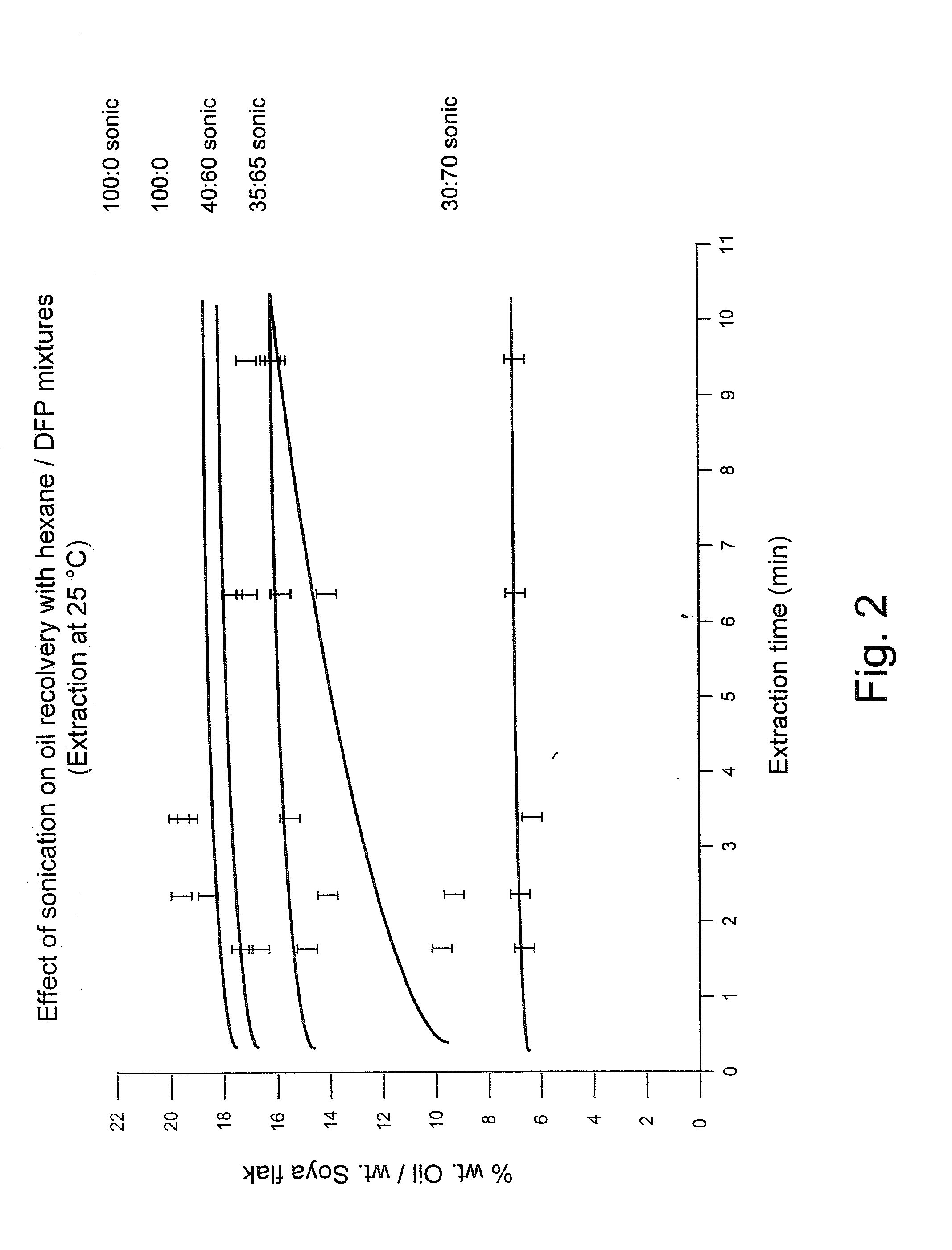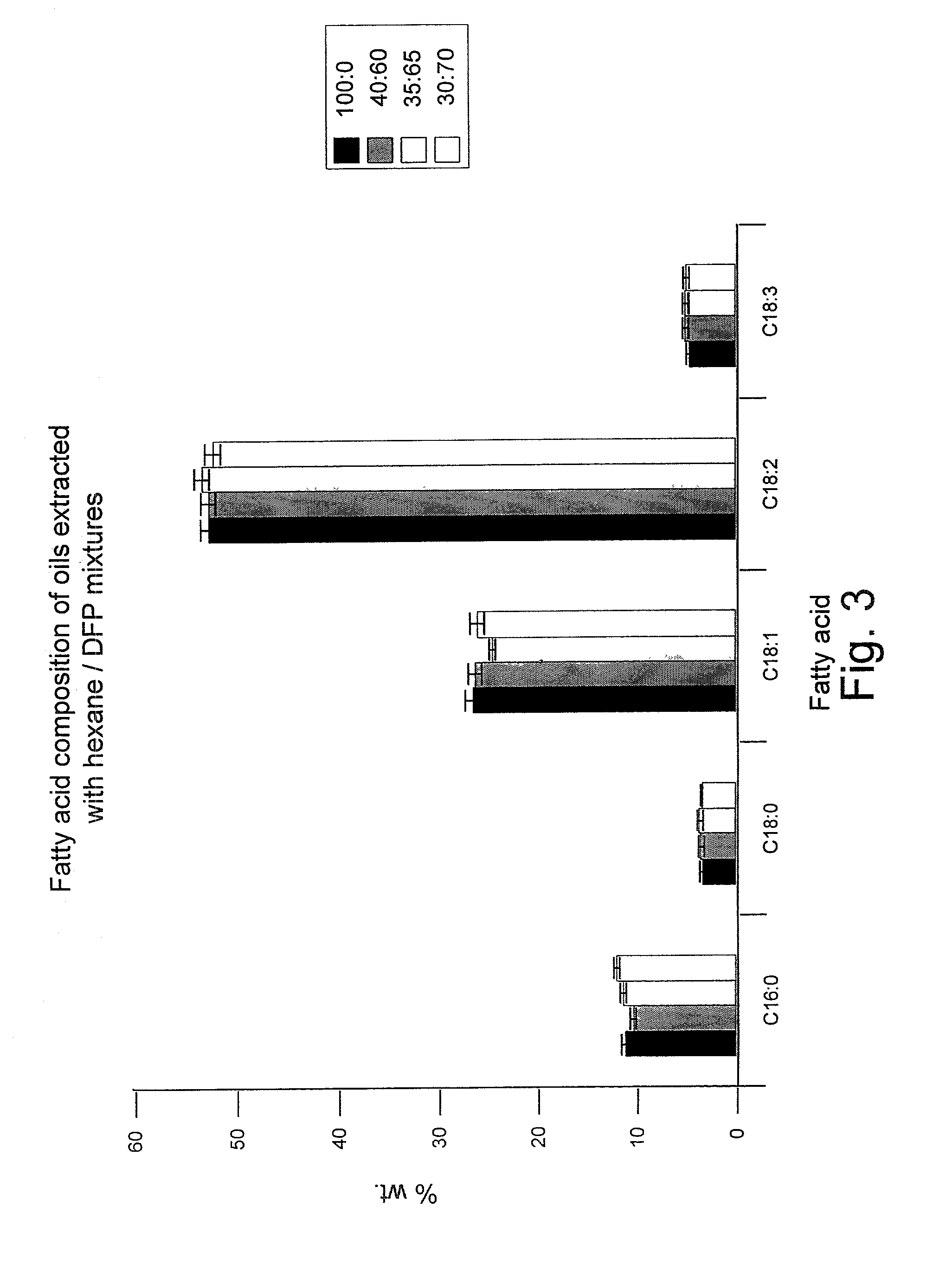Solvent and method for extraction of triglyceride rich oil
a technology of solvent and oil, applied in the direction of dissolving, biochemistry apparatus and processes, food preparation, etc., can solve the problems of limiting viscosity and being hazardous, and achieve the effects of less time and energy, less energy input, and less time and energy
- Summary
- Abstract
- Description
- Claims
- Application Information
AI Technical Summary
Benefits of technology
Problems solved by technology
Method used
Image
Examples
example 1
[0042] An amount of hexane was blended with an amount of hydrofluorocarbon so that, specifically, 1, 1, 1, 2, 3, 4, 4, 5, 5-5-decafluoropentane, the finished solvent was comprised of 65% by volume hydrofluorocarbon. The hydrofluorocarbon (HFC) was sold under the tradename Vertrel XF.RTM., by DuPont Fluorochemicals. After formation of the solvent, 100 grams of flaked soybeans were placed in a 10-foot long screw type auger set at a 30.degree. angle. The soybeans were dimensioned to resemble a flake so that they had a length of about 10 mm and a thickness of less than 1 mm. The solvent was added so that it flowed downhill, over the flaked soybean material, which was heated to 35.degree. C., while the auger turned at approximately 5 rpm to cause the soybean material to move in a direction opposite the solvent. The temperature in the screw type auger was maintained at 35.degree. C. Once the solvent passed over the flaked soybeans, a solvent and oil mixture was formed that was separated f...
example 2
[0045] Efficiencies of oil extraction obtained with hexane and solvent mixture systems were compared in a set of experiments. The variables examined were: solvent composition, extraction period, extraction temperature, and sonication.
[0046] All experiments were carried out with soybean flakes. The flakes were immersed in the various extraction solvents contained in borosilicate glass extraction vessels. Extraction solvents were hexanes or mixtures of hexanes and decafluoropentane (DFP) in varied ratios. As shown in FIGS. 1 and 2, the first number listed is the percent hexane, the second number is the percent DFP. The various combinations of hexane and DFP are listed in FIGS. 1 and 2.
[0047] The extraction vessels were placed in a thermostated water bath at a selected temperature for set time periods, two (2) minutes in the case of the experiment listed in FIG. 1 and a total of ten (10) minutes in the sonication experiment listed in FIG. 2. In a set of experiments, the effect of ultra...
PUM
| Property | Measurement | Unit |
|---|---|---|
| viscosity | aaaaa | aaaaa |
| temperature | aaaaa | aaaaa |
| temperature | aaaaa | aaaaa |
Abstract
Description
Claims
Application Information
 Login to View More
Login to View More - R&D
- Intellectual Property
- Life Sciences
- Materials
- Tech Scout
- Unparalleled Data Quality
- Higher Quality Content
- 60% Fewer Hallucinations
Browse by: Latest US Patents, China's latest patents, Technical Efficacy Thesaurus, Application Domain, Technology Topic, Popular Technical Reports.
© 2025 PatSnap. All rights reserved.Legal|Privacy policy|Modern Slavery Act Transparency Statement|Sitemap|About US| Contact US: help@patsnap.com



